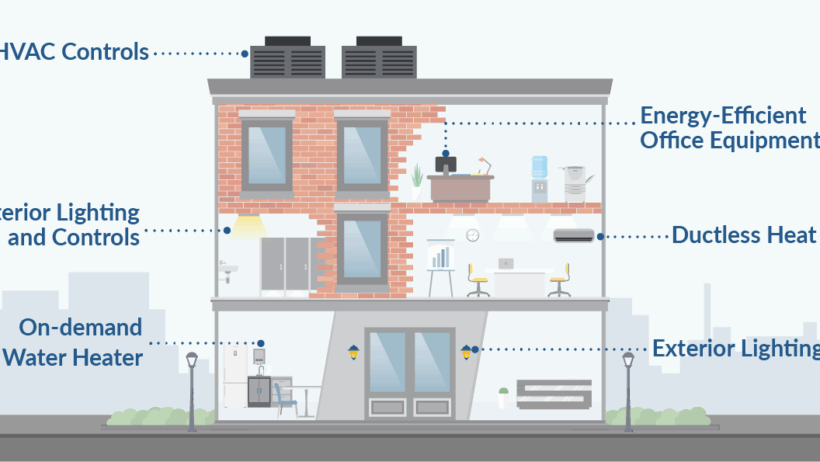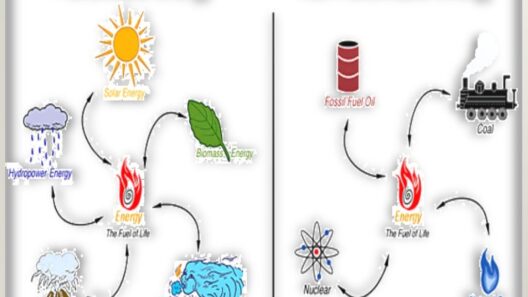As we navigate the complexities of the modern world, a playful question arises: what if you could significantly cut operational costs while contributing to a sustainable future? The concept of energy efficiency in the office presents a formidable challenge wrapped in an opportunity. Optimizing energy use is not merely a technical adjustment; it is a conscious shift towards responsible stewardship of our planet’s resources. Therein lies the essence of energy conservation, and it is vital for organizations to embrace measures that contain both immediate and long-term benefits.
The first step in maximizing energy efficiency is conducting a thorough energy audit. This process involves analyzing energy consumption patterns, pinpointing inefficiencies, and identifying opportunities for improvement. Employing a qualified professional can provide valuable insights, documenting energy use in a manner that reveals the underlying potential for savings. With data in hand, businesses can prioritize retrofitting initiatives that yield the greatest return on investment.
One of the most impactful measures is upgrading to energy-efficient lighting solutions. Traditional incandescent bulbs not only consume excessive amounts of electricity but also generate heat, which can lead to higher air conditioning costs. Transitioning to LED or CFL lighting is a prudent move that can diminish energy consumption by as much as 75%. Additionally, implementing motion sensors and timers reduces unnecessary use, particularly in spaces that are not consistently occupied. Lighting often represents a significant portion of overall energy expenditure, so this transformative step warrants serious consideration.
Another essential aspect of energy efficiency lies in the optimization of heating, ventilation, and air conditioning (HVAC) systems. Proper maintenance can drastically improve the operational efficiency of these systems. Routine inspections, filter replacements, and duct cleanings contribute to optimal performance. Moreover, the installation of smart thermostats allows businesses to regulate indoor temperatures with precision based on occupancy patterns and external climatic conditions. Such innovations can lead to substantial reductions in energy costs and enhance overall comfort levels for employees.
Do you ever stop and ponder whether the appliances in your office—especially older models—are contributing to hidden energy expenditures? Office equipment, such as computers, printers, and copiers, can be notorious for consuming vast amounts of electricity when left idle. Employing energy-saving settings on devices, utilizing energy-efficient models, and establishing practices such as powering down equipment during non-business hours are practical measures that can collectively work wonders. The advent of energy-efficient appliances has transformed the landscape of office technology, making it an opportune time for businesses to evaluate their equipment.
Beyond equipment, the physical workspace itself can be optimized for energy conservation. The strategic use of natural light can reduce reliance on artificial lighting. Positioning workspaces near windows, using skylights, and employing light-colored materials are all effective ways to enhance natural illumination. Incorporating well-placed blinds or shades also allows for temperature regulation, mitigating heat gain in the summer months and reducing dependency on air conditioning. These architectural considerations can create an inviting atmosphere while enhancing energy efficiency.
Another avenue worth exploring is the incorporation of renewable energy sources. While initial costs may seem daunting, investments in solar panels or wind turbines can yield incredible dividends in the form of energy savings and reduced carbon footprints. Many corporations are now opting for Power Purchase Agreements (PPAs), allowing them to procure renewable energy without high upfront costs. Not only does this signify a commitment to sustainability, it also enhances a company’s reputation in a world that increasingly values environmental responsibility.
Employee engagement is a key factor in the success of any energy efficiency initiative. Cultivating a culture of conservation within the workplace encourages individuals to take ownership of their energy consumption habits. Initiatives such as energy challenges or awareness campaigns can promote accountability and spur enthusiasm for implementing energy-saving practices. Engaging employees in discussions around sustainability fosters a collaborative environment where collective efforts can lead to transformative change.
Moreover, monitoring and reporting energy consumption progress is paramount. Establishing benchmarks not only allows organizations to track improvements, but it also instills a level of transparency that can drive behavioral changes. Providing regular updates on energy-saving efforts creates an atmosphere of shared responsibility and encourages ongoing commitment to energy efficiency goals.
The pursuit of energy efficiency is undoubtedly a journey, one that intertwines technology, behavior, and culture. It presents an opportunity not just to reduce costs, but to contribute meaningfully to the larger narrative of sustainability. As organizations cleverly navigate this landscape, they exemplify the notion that caring for the environment aligns with prudent fiscal management.
In conclusion, the measures presented are just the tip of the iceberg when it comes to enhancing energy efficiency in office settings. Transformational strategies such as energy audits, lighting upgrades, HVAC optimization, updating office equipment, harnessing natural light, investing in renewables, fostering employee engagement, and tracking success through monitoring can create a robust framework for action. As the challenge of sustainability looms larger, the measures an organization takes today will undoubtedly ripple into the future, representing not just an ethical imperative but also a strategic advantage in an increasingly energy-conscious world.








